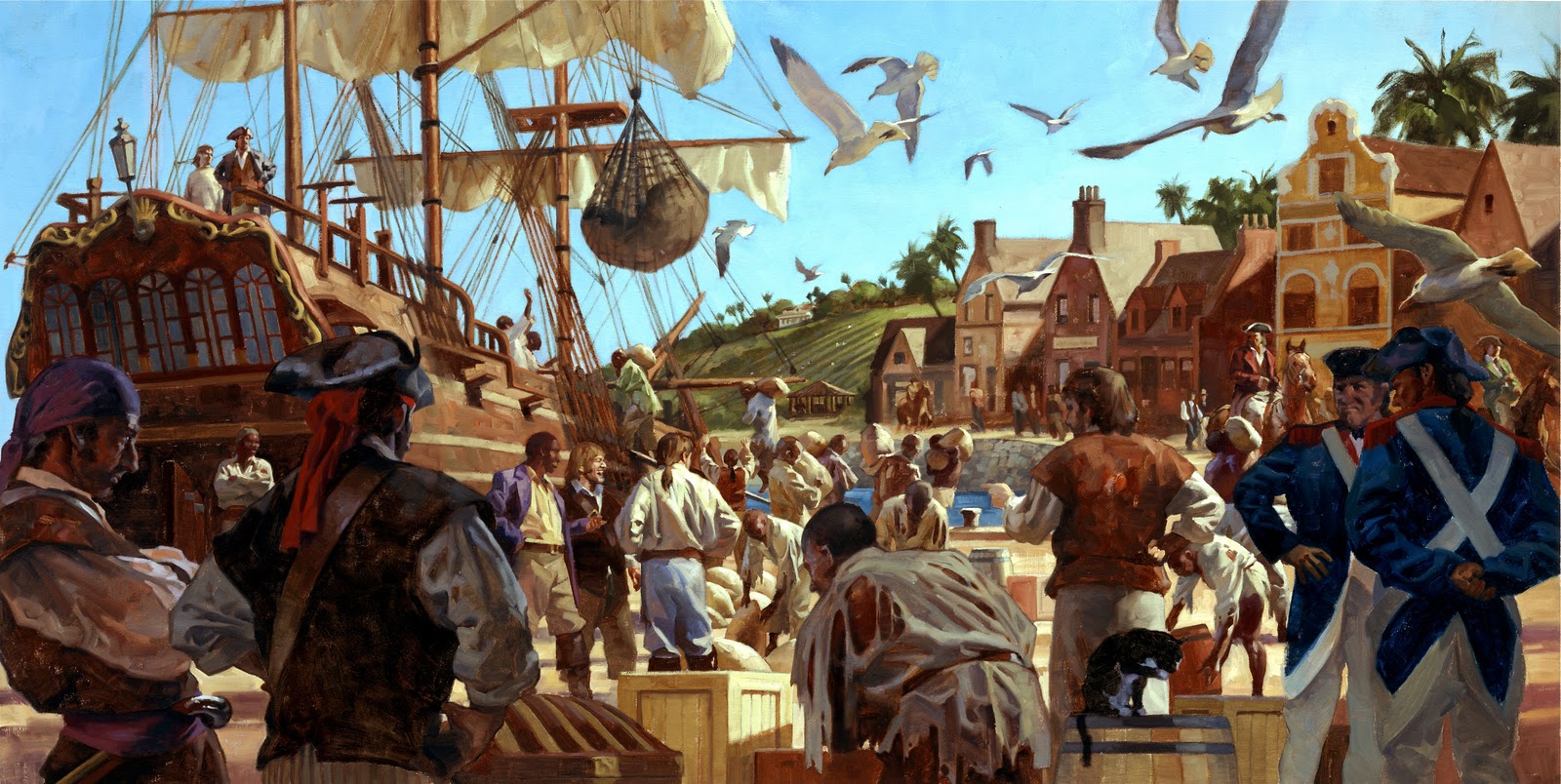What "Dishes" Were Part of the Sailor's Meal in the XVI - XVIII centuries
Hello, dear friends!
Today story will be devoted to what the sailors of the 16th and 18th centuries ate. During their endless voyages across the vast expanses of the seas and oceans. This post will open a whole series of posts about the life of sailors of the New Age, for life on the sea and life on land are two completely different worlds, especially in the era of the Great Geographical Discoveries and piracy. By the way about piracy: personally for me this aspect of seaman's life is the most interesting, so piracy and pirates will be devoted to individual articles with a lot of interesting information.

In the meantime, let me tell you about the wonderful sailor menu. Just a small warning - if you are currently eating, then postpone this post until the end of the meal =) Let's get started!
By my warning, I have already made it clear to you, dear readers, that the seafarers' kitchen of that era was very bad, not to mention the absence of luxurious dishes. Going out into the sea, any knowledgeable sailor prepared himself for the worst, because on full bacteria and smelly rats the ship was stained with disgusting food. In many respects this was the "merit" of the hated and greedy commanders, who often sought to profit from the meager pay of ordinary sailors. These circumstances were supplemented by eternal dampness and the inability at any time to purchase food. As a result, the following picture appears before us: a very meager supply of food on one side beats the lack of sanitary conditions for storing food, and on the other hand, the heavy hand of commanders, boatswains, skippers, treasurers who steal a good half of the food budget, leaving the team of the ship in distress.
But what I'm saying, let's turn to the memories! The Italian navigator Antonio Pigafetta, the participant of the first ever circumnavigation of the world under the direction of Fernand Magellan, described the "charms" of the sea voyage: "We ate breadcrumbs, but they were not biscuits, but dry dust mixed with worms." It heavily stinked with rat urine. We drank yellow water, which had been rotting for many days ... We often ate wood sawdust, rats were sold for half a dozen a piece ... ". The meat was on the ship, but when the salt ended it quickly faded and became unfit for food ...

Antonio Pigafetta
And here is what Captain Jean Dublet wrote about this: "There was only a little beef and salted bacon left for the crew, but rotten and soaked in salt water, I told several sailors to catch rats for us ... Those who laughed at me, Went into the taste ... Twenty-one days later, their hairy skins went in, they turned into a very stinky, sticky mass, but, roasting them on the coals, we fed the rats to the table and quenched our wolf hunger. "
Stink, dirt, rats as almost the only source of life and the total mortality due to all this - that's what the ship's command often waited a couple of months after leaving the open sea. Naturally, such horror left a trace in the psyche of the crew for ever.
However, this is not the end. Above, I gave you a general picture of what was happening on the ship in emergency conditions, when food supplies were running out. Now I will tell you about what exactly they ate on the ship in the long months of sailing, when there was no need to roast the rats.
First of all, black and white rye biscuits were taken as supplies to the ship. While they were not ridden by rats and worms, biscuits were quite tolerable food, the main dish on board the ship. By the way, if suddenly one of you stumbles in a book or film on the phrase "five barrels of bread were loaded onto the ship," then you should understand that it is biscuits that are meant by "bread." Why not just take bread? It's simple: it spoiled very quickly.
Baking bread on the ship itself was a strange and impractical idea: there was no one to do it and there was no time. In addition, it was extremely unsafe in the fire relation, because the furnace is a fire, and before the iron ships a couple of centuries. It is for these reasons that the bread was baked on the beach. Already mentioned above, Jean Dubleau described how members of his team cooked bread during one of the rare landings on dry land. Having created a couple of tents from the sail, they built the stoves with the help of bricks and set about baking. Frying it twice, they received the necessary crackers, or, as they were called, "biscuits" (from the French "twice baked"). After that, you could continue swimming.

In addition to whole biscuits, crushed rusks could be useful. One of the favorite dainties of the sailors was a "dessert" made from dried crumbs: sugar and bacon were added to it, and a sweet, thick brew was obtained. These are the joys of life that seafarers had in the 17th century - a brew of bread crumbs, sugar and bacon ... In addition, the flour was taken to the ship, which was mostly added to the soup in order to give it more strength and make it more nutritious. Flour was a valuable product, and sometimes sailors left it in their island shelters and kept it there just in case, in reserve. In addition to flour and biscuits, the indispensable dishes of the ship's meal were cheese, dried and smoked meat and fish, lard, butter, rice, beans, peas and beans. However, all these dishes were very specific because they required, so to speak, storage norms, which were not naturally observed.
As I already mentioned in the beginning, the food on the ship looked pretty weird and even scary. Only from one of its kind, not to mention the disgusting taste, the inexperienced sailor had colic and vomiting. How did you deal with this? With an infinite amount of salt! Salt, it was salt that served as a refrigerator in those distant times. It was salt that did not allow products to prematurely deteriorate, and so it was more than used on ships.
Several times a week the team members were given beef or pork, the cheapest and most bad quality. All these products were incredibly salty, because only in this form they could be stored during long voyages. Tough, green with yellowing, the meat gave off an unpleasant smell, but the worms were not swarming - so you can eat!
That's all, dear friends. In this post I described to you the diet of the average sailor of that distant era. Rotten meat, and in extreme cases fried rats - this is not seen in the movie about the fearless lords of the seas, right? :) Yes, everything is much more prosaic, and this is only more interesting. Therefore, if you liked this post - follow @morpheus03 to not miss anything. See you later!
That food looks amazing! Send some to me! @morpheus03
In contrast to your European sailors, the crew of the Chinese treasure fleets lived in luxury. The ships were a lot bigger, they grew vegetables on board, they kept live animals on the ships and females did most of the cooking and cleaning.
https://drive.google.com/open?id=15aMTipnbSSn34eAGgUwuSVy0x_SL-OU7FQ
The European sailboats, looked like canoes next to these Chinese four story ships, it was said.
@morpheus03
Nice Post!
Thanks for sharing this.
@morpheus03 got you a $0.31 @minnowbooster upgoat, nice! (Image: pixabay.com)
Want a boost? Click here to read more!